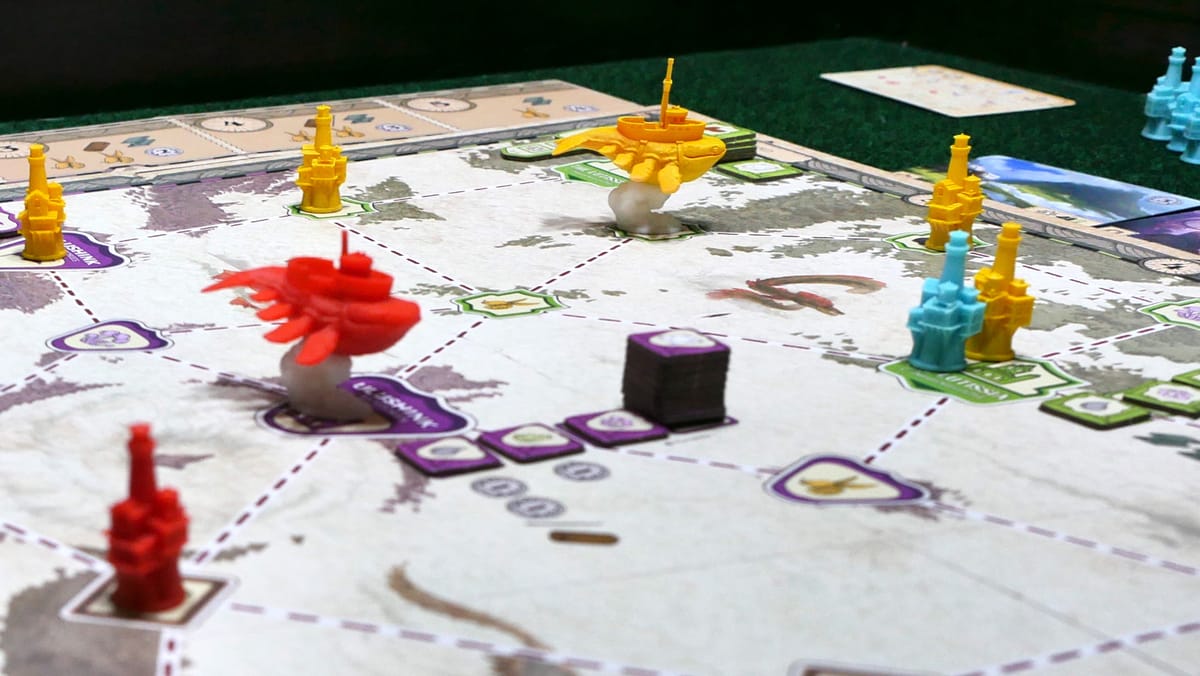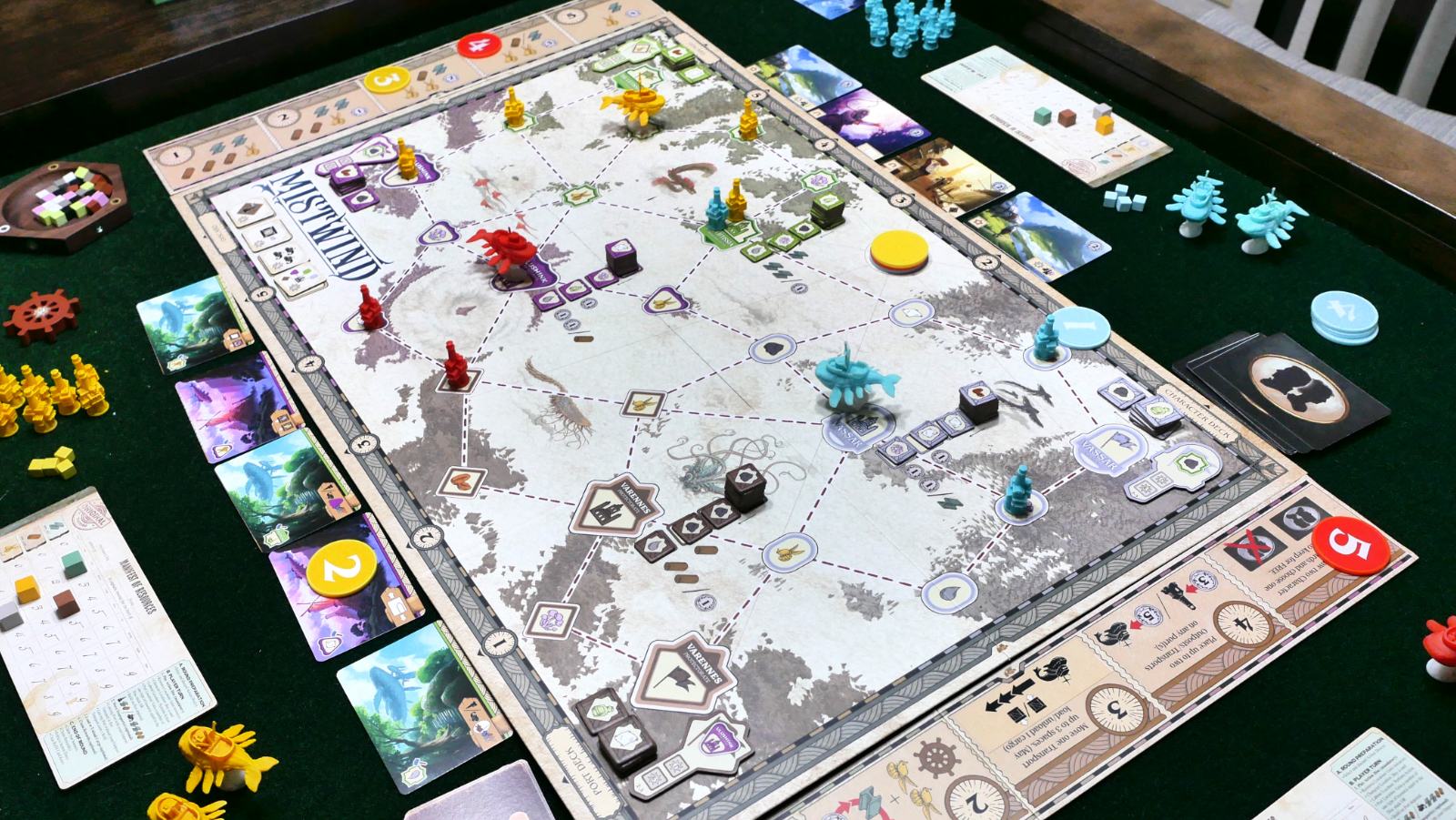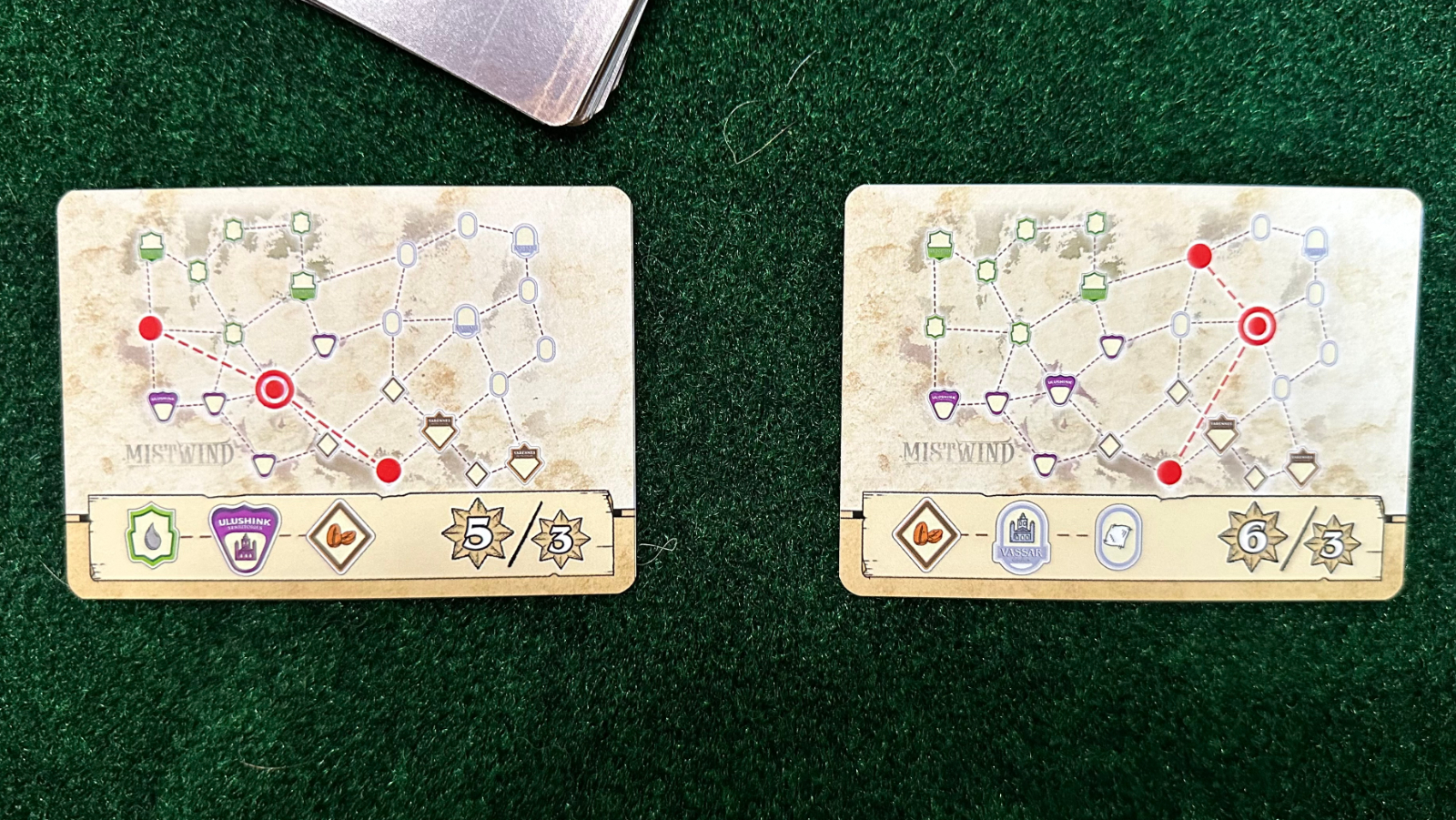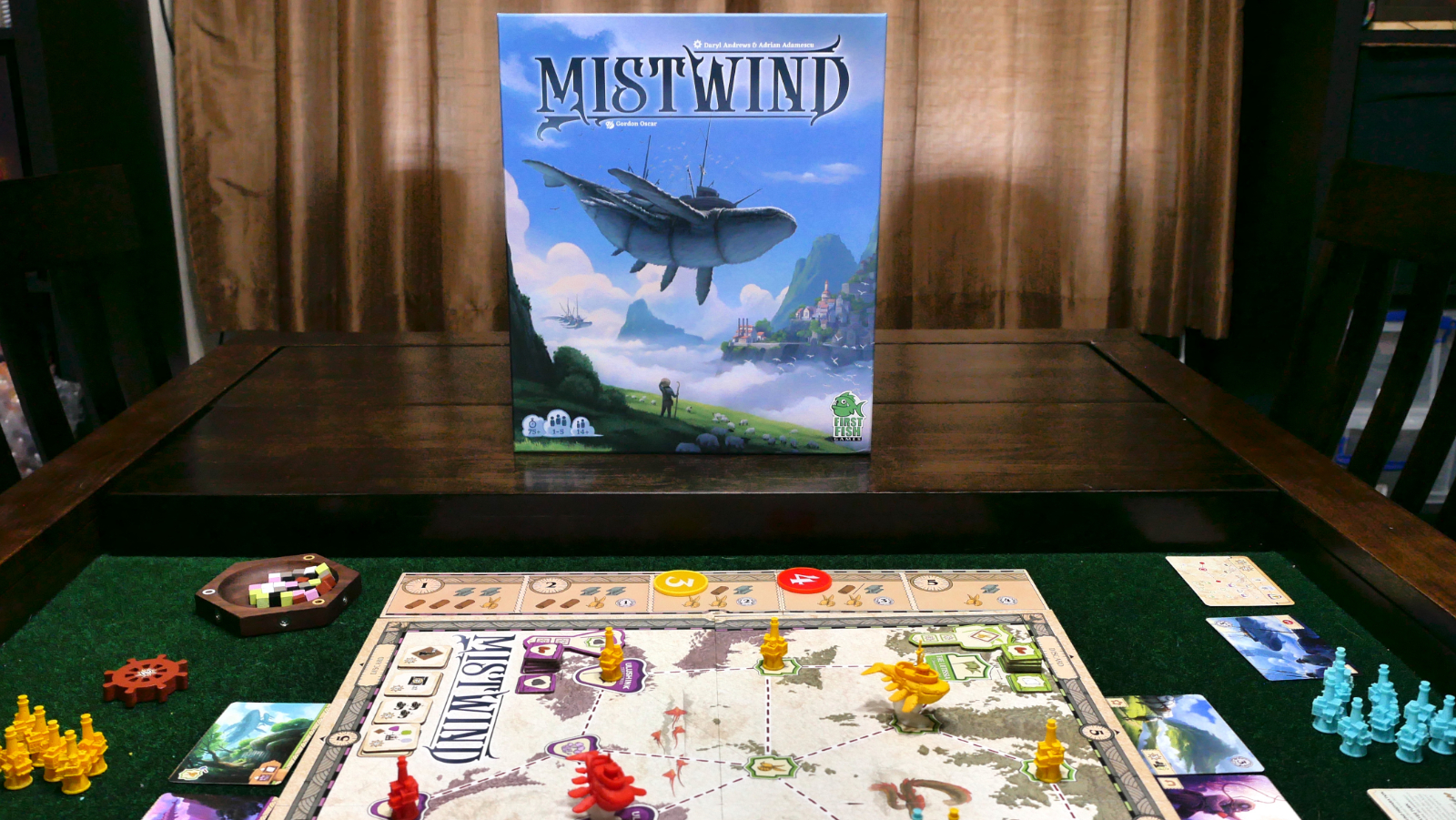
The first time we played Mistwind was a year ago at Gen Con 2022. Even in that early state it had quite the table presence — the flying whales, a large map board with lines connecting several small islands to each other, the numbers one through five on each side of the board perimeter, and each player with a small stack of poker chips that matched their player color. The visual design was still very rough and the components were a mix of generic bits and custom printed resin figures, but the unique theme and intriguing player action system made a strong impression.
Recently, we got to spend a lot of time with a much more polished prototype, and I’m happy to report that every aspect of the game has improved; multiple piles of resource tokens have been replaced with trackers on a player board, the cards now have gorgeous art depicting Mistwind’s unique setting, and iconography on the various action boards and cards is consistent and intuitive. Overall, much more functionally sound and with most of the aesthetics in place, Mistwind looks less like a prototype and much more like a complete, playable game. That table presence got even better.

The big question, of course, is how does it play? Mistwind definitely continues the modern trend of plucking game mechanics from other games and combining them in a fresh new way, which leads to more than a few shallow comparisons that probably don’t do the game many favors. A perfect example of this is how it is being compared to Ticket to Ride due to the route mechanics. Like Ticket to Ride, you’ll get a route card at the beginning of the game that you’ll complete by chaining together outposts and transports (whales) at multiple points on the board. That one card is all you’ll personally get, however, as there is no way to get more route cards during the course of the game, and it may not even be the most important thing you focus on as there are other ways to score points, such as achievements or gathering the most of a region’s commodity tiles. There are other routes on the board that can be completed, however these are known to the whole table and the amount of points awarded changes according to how soon you complete them.

Route cards
I’d give more weight to the pick up and deliver mechanics, as this is where most of the player focus tends to be. Players move around the board, spending krill for movement (unless they have an outpost on the space they are moving from, which enables them to move once without the cost), and picking up the resource pictured on the port (represented by a colored cube that slots on the back of the transport). Then they can move to one of the territory or nation ports, drop off the resource, and claim the corresponding demand token plus any bonuses depicted next to the token slot. Besides the intrinsic point values on these tokens, further bonuses can be earned via the four randomly selected achievement tokens drawn at game setup or having the majority of a type of resource. Applying strategy to these mechanics make demand token collection one of the easier, and often sneakier, methods of hoovering up victory points at the end of the game.
The real beauty of this game, however, lies in its poker chip action system. For a game that otherwise encourages player coexistence for the most part (transports and outposts from different players can be on the same port, very friendly), the five numbered chips each player uses to determine their actions each round injects some very yummy friction into the mix. Here’s how it works: The actions available to the players edge each of the four sides of the board: gain resources, hire characters, “labor” (basically miscellaneous actions, like claim the first player token, or acquire a random character for free), and build an outpost/transport on a port. There are five slots on each side, numbered just like the player chips. Going in clockwise turn order from the first player marker, each player places one of their numbered chips in one of the numbered slots. However, at the beginning of the round, each player chooses one of their five chips that they decide not to use on the compass of the board, one action number they have no access to this turn. Also, on three of the four action groups, once a numbered chip is placed on the numbered action space, that action space becomes unavailable to the other players. The one exception is the fourth group of actions, the port cards, which players can stack up their discs in the order taken, with the topmost disc receiving a bonus at the end of the round. This is where the game really shines, with players second-guessing when to place an important action chip, second-guessing the decision they made at the beginning of the round’s choice of which number to -not- use that round. The friction introduced when a player claims an important action slot before the next player has a chance to, or had to wait because they didn’t have the resources to take that action yet, definitely makes going first a much more calculated decision, and not always the best idea.
Resource tracker
Based on the prototype copy we played, the sweet spot looks to be 3-4 players. It can play up to five but selecting two chips each round to remove from play and adding a fifth round to get it closer to the same amount of turns as the other player accounts made the game feel a bit claustrophobic for my tastes. It was still fun, just not as fun as a four player game. The solo game was fine, but the lack of tension between players over the action system made it feel like an incomplete experience. The two player game essentially adds a third automated player, with some shared control between the two real players, but I think that just proves my point about where the sweet spot is. Mind you, even though the game is nearing the end of a successful Kickstarter, some of this could still change before backer/retail release.
Mistwind is shaping up to be a genuinely fun game with a unique and eye-catching aesthetic. The action chip system introduces some very spicy player interaction in an otherwise straightforward mixture of route completion and pick-up and deliver mechanics. Find out more and back the Kickstarter before it ends on August 31st!
